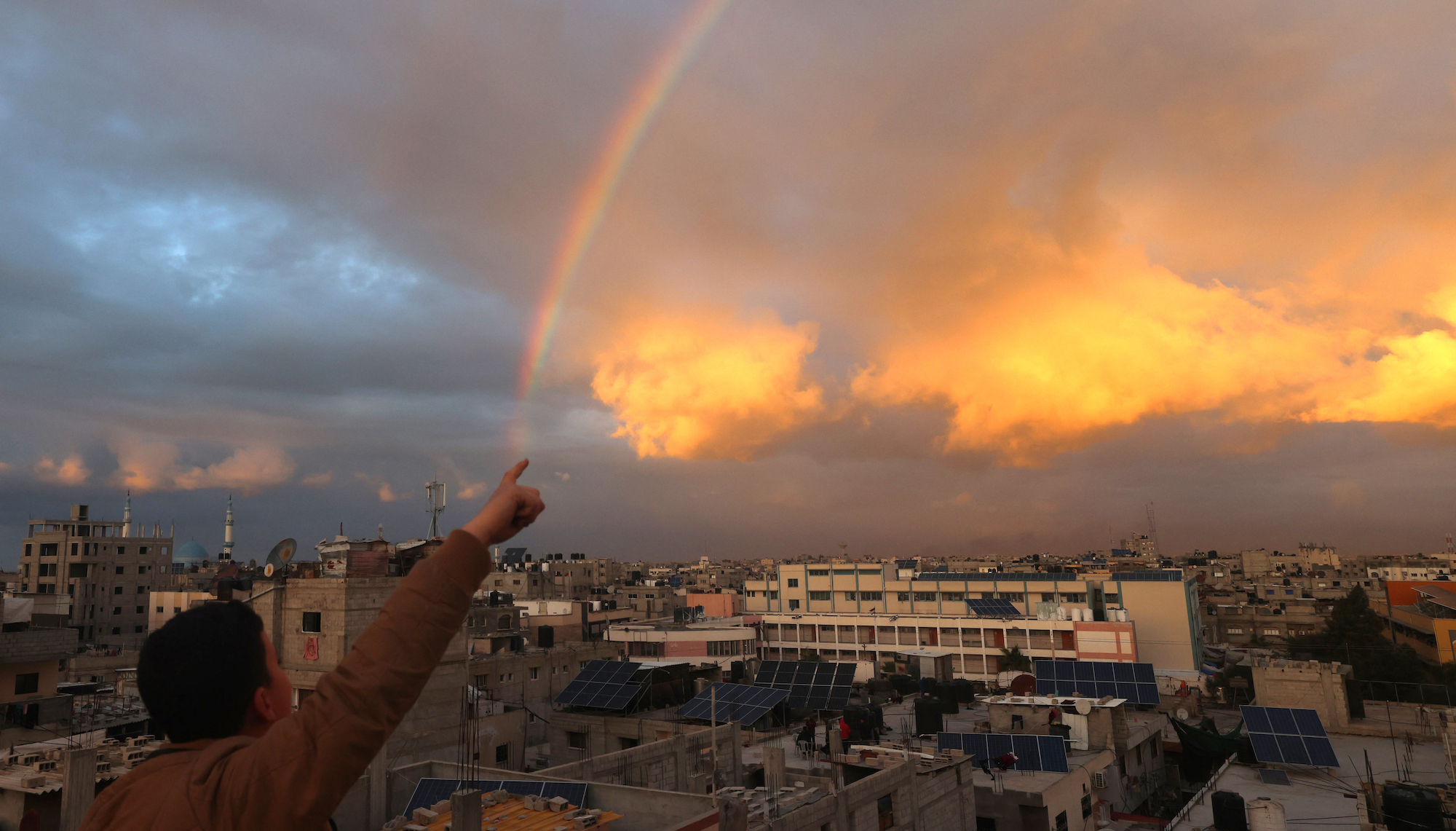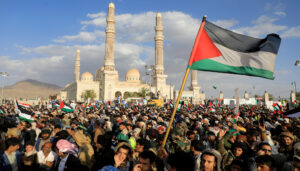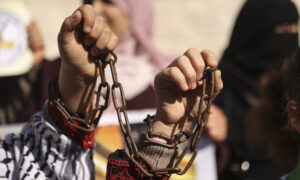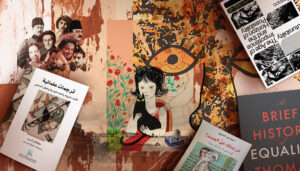For more than four weeks in September and October of this year, Jordanian teachers went on strike to demand raises, improved benefits, and better professional development opportunities. The teachers’ movement, led by a strong Teachers Union, mobilized public school teachers and sustained public support through an innovative approach to claim-making that made their message effective and resonant with the majority of Jordanian society. The contribution of female teachers in the strike marked an advance in Jordanian women’s activism in general; and female teachers’ activism in particular, distinguishing itself by an innovative mobilization repertoire and tactics. Their vital role in the protest movement needs to be captured along with their specific local circumstances and located within the larger context of global feminism and women’s solidarity.
This article examines the features of this activism, using testimonies from some of the participating teachers. It mainly focuses on the distinctive features of female teachers’ activism in Jordan, including its central concerns, and the repertoire that teachers have deployed as well as its relevance to the discourse on women’s rights in Jordan.
Background and decisive moments
The most important event that shaped the trajectory of this strike is the main demonstration that the union organized in front of the Prime Ministry building near the fourth circle area in Amman on September 5, 2019. During the rally, the union mobilized thousands of teachers from all over Jordan to Amman, with many female teachers who joined the strike coming from distant regions like Ma’an and Mafraq. The presence of female teachers either physically at the rally or via the different social media platforms proved to be instrumental, as they occupied public space, raised banners, and voiced their demands alongside their male counterparts. As the police cracked down and arrested some of the participating teachers, demands for an apology became part of the demands made by the protesting teachers.
Renad, an early childhood educator from Shobak district, emphasized that the demands for apology became central to the strike, as teachers felt the government had belittled their dignity. On the other hand, Amal, an English language teacher from Marka district, described the rally as a breakthrough, mainly breaking social and political barriers on the public role of women and enabling female teachers to take central roles in activism. “We felt that we were attacked only because we were teachers, and we had no choice but to assert our dignity,” Amal remarked.
Amal’s colleague Lina, a home economics teacher, said that female teachers felt their demands shift after the rally to focus on uniting as a body, one that acts as an institution for all teachers regardless of any other considerations. “Our activism as women was not about raises, it was about our belonging to the Union, the idea that our Union is united, one that has a powerful presence, that can contribute to a revolution against corruption,” Lina added.
Reem, a science teacher from Shobak district, emphasized that the Union’s Council inspired female teachers from the outset of the strike, especially three weeks into strike through what it called ‘the week of Nashmiyyat’[1]. From September 5th onward, female teachers took to their different platforms—mainly through Facebook and WhatsApp— to voice a central message consistently and assertively; that they will not end the strike until their demands are met. To that end, teachers deployed a body of images, poetry, slogans, and forms of art that the article will describe later.
In addition to their steady and consistent messaging disseminated through their social media venues, teachers maintained that what made the current teacher activism distinctive is the trust and support that teachers placed in the union’s vice president and council. That said, while the union provided an equal and professional platform for the teachers, it must be noted that none of the 14 members of the Union’s council is a woman.
Strategies deployed and their significance
This expression of unity and the distribution of messaging about it was crucial to the success of the strike. “Even when school principals were pressuring us to teach, or threatening us with financial and administrative retribution, we remained united,” Amal said. Lina for her part said that the most important strategy that the female teachers adopted was focused claim-making and making their voice and presence felt. “The female teachers left their homes and children every single day to be present at the site. In the past, we would have thought this would be a futile endeavor, but this time we were positive we will attain something. It was as if the collective thought of the group supported that of the individual. We felt that the way we are engaging with matters in Jordan is healthy,” Lina added.
By following the materials that teachers circulated on social media throughout the strike, we can trace the day-to-day interactions and activities the teachers were part of and notice the significance of the female mobilization. These materials include videos of families and individuals voicing solidarity with teachers, photos and videos of families and students in their home environments expressing their appreciation for the union’s undertaking, and numerous posts aimed to boost the teachers’ morale and praise their unity and steadfastness.
This coordination and flow of information shows an important aspect of the significance of women’s activism in relation to women’s role in society in general. Reem noted that the female teachers’ influence over parents was more significant due to their ability to communicate with students’ families and explain the details and developments of the strike to them, and especially to the mothers. The image of the strong female presence during the September 5th demonstration was powerful because it was a gathering for the general body of the union to present and voice its demands. On the ground, the interaction of families with the teachers revealed another layer of social solidarity with the strike, for people empathized with the teachers and voiced their support, as many families also have relatives who are teachers. Notably, the female presence on social media was strong and constant, and female teachers’ posts and materials exhibited a level of professionalism. Even when attacked, they maintained the use of one hashtag that swept through social media platforms, that being #with_teacher.
Reem maintained that one of the most effective strategies deployed in the strike was the use of social media to contact and coordinate with families effectively and swiftly. Amal also noted that the participation of the female teachers carried more weight than that of the male teachers, as parents have a stronger rapport with the female teachers and were more sympathetic to their demands.
According to research on teachers’ strikes in the U.S.,[2] teachers’ movements in general are not only linked to attaining raises or improving the working environment, but are also rooted in demands for the betterment of the lives of students and social justice. In the Jordanian case, female teachers possessed two layers of power through which the success of the strike was heightened; their professional role as teachers as well as their social role as mothers, aunts, and sisters enacted through daily-lived experience, whether at school, on social media, or in their community.
Important events and their relevance to feminist thought
During the strike several female teachers faced threats in different forms, including violence, bullying, and legal threats, more than their male counterparts. They included threats of being legally penalized or transferred. In Karak- Al-Manshiya district, four teachers were arrested for four hours in the aftermath of a clash with a parent who attacked them because of their participation in the strike. Their arrest mobilized hundreds of male and female teachers who held a demonstration in front of the Justice Palace in the city. Additionally, in two different incidents at schools in Amman, female teachers were attacked while at school by unknown women sent by a member of the Parliament who paid them. Amal believes that such attacks aimed to weaken the strike through attacks on women, as the perpetrators assumed that when threatened and attacked, female teachers would give up and end the strike. In her words, “they [the state] would not do that to male teachers; only female teachers had to deal with a situation like this”. While she regrets such incidents, Amal maintained that they only made the teachers stronger and more determined. They also created a general sense that female teachers are being targeted because they are women and that those threatening them are hostile individuals, which garnered them more support.
Through these incidents, the state exercises its power not only through securitization or by means of enforcing penalties but also as a hegemonic, patriarchal entity. Salam, a former social studies teacher and teacher trainer, insisted that the government’s negligence and lack of seriousness when it comes to teachers rights and demands is also linked to the fact that the majority of the teaching workforce in Jordan is comprised of women. According to recent statistics, 62.2% of public sector teachers in Jordan are women, in comparison to 89.8% in the private sector. It is worth mentioning that private schools teachers have also been fighting for their rights, especially to raise the minimum wage, protect against wrongful termination and guarantee basic benefits. Salam’s view is validated by the state’s position towards female teachers, as the Ministry of Education denies their right to pass ministry scholarships to their children if they are married to non-Jordanians.
Throughout the four weeks of protests, the government used different methods to scatter the teachers’ attitudes and distract them from their primary goals. In its strategies, it mainly targeted students’ families, encouraging them to send their children to schools to embarrass the teachers. To counter that, female teachers used their unique position to turn the issue back on the government as posts, photos, and videos spread on social media of students showing their solidarity with the teachers. Examples can be found on schools’ Facebook pages where we see various materials reiterating the message that the teachers were carrying forward to the students and their families through the strike. The Shobak Secondary School, for instance, deployed content that focused on the value of teachers in society, citing poetry from classic Arabic literature, religious texts, and patriotic songs. It is noteworthy to highlight that the content emphasized its ‘feminine’ nature and that it addressed women in general and female students and teachers in particular.
Through acts of solidarity, organized activism, and constant sharing of the hashtag #with_teacher, female teachers also showed unwavering commitment to their union, regardless of the shaming they had to endure, especially from other family members or mothers. Salam explained to me how female teachers had to endure attacks from other groups in society who viewed them as having a subordinate jobs and a lower station in society. Throughout the strike, teachers in general and female teachers in particular endured the accusation that they were jeopardizing the welfare of students. Salam also cited the lack of support for teachers from other segments of society, especially the elite, including university academics and women’s rights organizations that claim to work for the advancement of women’s rights. Salam added that female teachers taking their demands to the streets and sharing the same platforms as men marks an important development for Jordan as more women teachers are now unafraid to express their needs and to take up a clear and effective role in teachers’ activism, without feeling shamed or belittled.
Conclusion
In her research on the activism of female day laborers in Jordan, the researcher Sarah Ababneh shows how female workers— mainly from tribal and rural areas— pushed their economic demands to the forefront of the political movement, creating a momentum focused on economic deprivation without overtly politicizing it.[3] The women Ababneh researched invoked expressions of citizenship rights and used a language similar to that of political parties, such as their insistence on the irrelevance of voting rights when people are economically deprived.[4] In the teachers’ strike, we have witnessed activism that utilized the position of female teachers in society as mothers, sisters, family members, and community mobilizers. Female teachers strategically used their position and strength to make a claim on a state that has long belittled their economic and social contribution. The commendable reaction of female teachers to physical and moral assaults and shaming has advanced popular conceptions of women’s place in Jordanian society as they demonstrated their key role in the achievements of the union. While more work needs to be done to ensure inclusiveness for women in the union’s leadership, the success achieved by the female teachers in the strike promises more achievements for the advancement of the political activism in Jordan in general.
-
Notes
* PhD student in anthropology and education, Teachers College, Columbia University
[1] Nashmiya is an Arabic Jordanian word for strong and capable woman.
[2] See also: http://theconversation.com/whats-behind-the-teacher-strikes-unions-focus-on-social-justice-not-just-salaries-111490
[3] Sara Ababneh, (2016) “Troubling the Political: Women in the Jordanian Day-Waged Labor Movement.” Int. J. Middle East Stud. 48 (2016), 87112.Doi:10.1017/S0020743815001488. P. 90
[4] Ibid, p.100
Buterbaugh, Jessica (2019) Teachers’ strikes a new social movement, researcher says. Accessed 10/21/ 2019 at: https://news.psu.edu/story/573753/2019/05/10/research/teachers-strikes-new-social-movement-researcher-says







